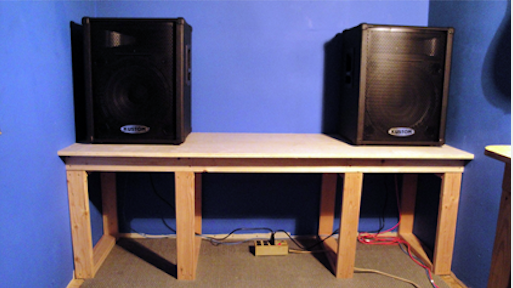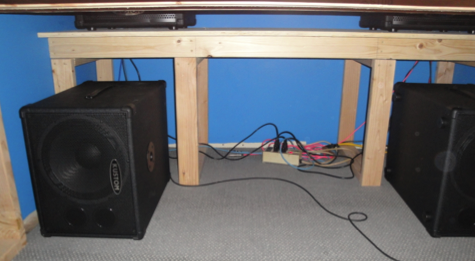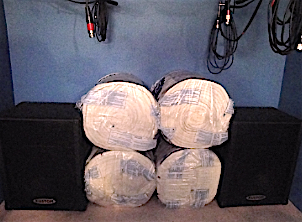The last time I checked, NOTION generates audio at standard CD quality, which is 44.1-kHz at 16-bits, although exporting audio as a WAVE file has options for 24-bit and 32-bit . . .
The correct way to work with NOTION is to set the Digital Audio Workstation (DAW) application--which in the example you provided is Logic Pro 9 (Apple)--to 44.1-kHz at 16-bits, and for reference it does
not sound better if you increase the bits . . .
[
NOTE: This YouTube video of an audio workshop held by Ethan Winer (RealTraps) is excellent for discovering and understanding the realities of audio, and Ethan is a skilled musician and composer who plays a surprising range of instruments very well, which makes him all the more interesting, where for reference cello is his passion . . . ]
Audio Myths Workshop (Ethan Winer et al.) -- YouTube video"TeleVision" (Ethan Winer) -- VIMEO music video"A Cello Rondo" (Ethan Winer) -- YouTube music videoStandard CD quality is excellent, and the reality is that nearly nobody can tell the difference at higher sampling and output generating rates, in part because (a) most people do not have the refined and trained hearing required to discern the difference and (b) nearly nobody other than a few audiophiles and the folks who follow my advice on studio monitor systems have the required high fidelity equipment to discern much of anything, all of which is explained in one of my fabulous ongoing topics in the IK Multimedia FORUM, which is fabulous . . .
[
NOTE: The sound isolation studio is 6 feet wide by 7 feet tall and 12 feet long, which is approximately the size of a walk-in closet. These Kustom self-powered PA loudspeaker units are vastly overpowered for this size of room, as is the case for a room 20 feet by 9 feet by 20 feet, but the key is to run them at very low volume, where here in the sound isolation studio I run them at approximately 2 on a scale of 0 to 10, and I verify the sound pressure level (SPL) with a NADY Digital SPL Meter so that the maximum is 85 to 90 dB SPL. You can balance them reasonably well with just the SPL meter, but to do a scientific calibration you need the additional equipment and software that is described in the IK Multimedia FORUM topic, which includes the ARC System 2 (IK Multimedia) in addition to two of the Behringer signal processors, one of which I have and the other of which I am waiting somewhat patiently until it is discounted. These Kustom units have Class AB power amplifiers, and at lower volume levels it operates as a Class A power amplifier, which is excellent. Also note that the output power ratings for the Kustom self-powered units are conservative, and this particular combination is more than sufficient to be the DJ/PA sound reinforcement system for a small nightclub, so it is extremely important to keep the volume levels on the power amplifiers low. And once you get everything properly configured and calibrated, which includes doing whatever acoustic treatments are required for the studio, music room, or listening room, you will be be amazed and will have an epiphany if you never have heard a properly calibrated full-range studio monitor system in an acoustically treated room, and it is all the better if the room has a fully floated floor . . . ]
Class AB Power Amplifier (wikipedia) Kustom KPC15 15" Powered Two-Way PA Speakers ~ 100W Each
Kustom KPC15 15" Powered Two-Way PA Speakers ~ 100W Each Kustom 12" PA112S Powered Subwoofers ~ 200W Each
Kustom 12" PA112S Powered Subwoofers ~ 200W Each[
NOTE: After doing real-time analysis (RTA) of the acoustic characteristics of the sound isolation studio--which incidentally is a room within a room within a room and sits on a fully floated floor of compressed rubber mats for stellar subsonic deep bass response and isolation--it became apparent that there was a gnarly low frequency standing wave, and the practical solution was to put a bunch of rolls of fiberglass insulation and cubes of compressed cellulose insulation in the sound isolation studio, since this type of insulation is excellent for absorbing troublesome low-frequency standing waves that make a room behave in a "boomy" way, which muddles the midrange and high frequencies. This strategy is affordable and works very nicely, where at present it maps to 6 rolls of fiberglass insulation and 5 cubes of compressed cellulose insulation, with four of the rolls of fiberglass insulation shown in the location between the two Kustom KPC15 15" Powered PA Speaker units. If you are concerned about the visual appearance, then you can use porous cloth, decorative fabric, or canvas screens to cover the rolls and cubes of insulation. The additional rolls of fiberglass insulation and cubes of compressed cellulose insulation are on the floor in key locations, including all four corners of the sound isolation studio and stacked between the pair of Kustom 12" PA112S Powered Subwoofers, which I pull down to 20-Hz via signal processing equipment, which I can do safely since I run them at low volume, hence they can be pushed into the deep bass and actually subsonic deep bass range, where the basic idea is that you want your studio, music, or listening room to be a finely tuned instrument. And for reference, I wear OSHA approved ear protectors and use a digital SPL meter when configuring this type of system, because it is so powerful in a small room that it can damage your hearing permanently if you forget to pay strict attention to the volume levels of the power amplifiers, computer, and external digital audio interface (for example, a MOTU 828mk3 Hybrid, which is what I use). These are not toys, and they need to be big and heavy because this is the way it works when one follows the fundamental principles of Newtonian physics, which is the only set of rules that are not a complete and total joke in this particular instance . . . ]
 The Fabulous Affordable Studio Monitor System Project (IK Multimedia FORUM)Fabulous!
The Fabulous Affordable Studio Monitor System Project (IK Multimedia FORUM)Fabulous! Until you have a calibrated full-range studio monitor system, the fact of the matter is that you are spinning wheels in the digital music production universe, and the only way to have a calibrated full-range studio monitor system at the dawn of the early-21st century is to do the required custom work, which actually is easy to do, since I discovered and documented exactly how to do it for approximately $1,500 (US), which is one-fourth of what JBL charges for its top of the line piece of junk "studio monitor system" that is not a calibrated full-range studio monitor system, where specifically "full-range" refers to having a flat equal loudness curve from 20-Hz to 20,000-Hz at 85 dB SPL, which is the ideal listening level for final mixing and mastering. Yet another fact is that you cannot mix and master accurately when listening to headphones, which also is explained in the aforementioned fabulous topic in the IK Multimedia FORUM . . .
Lots of FUN! 


